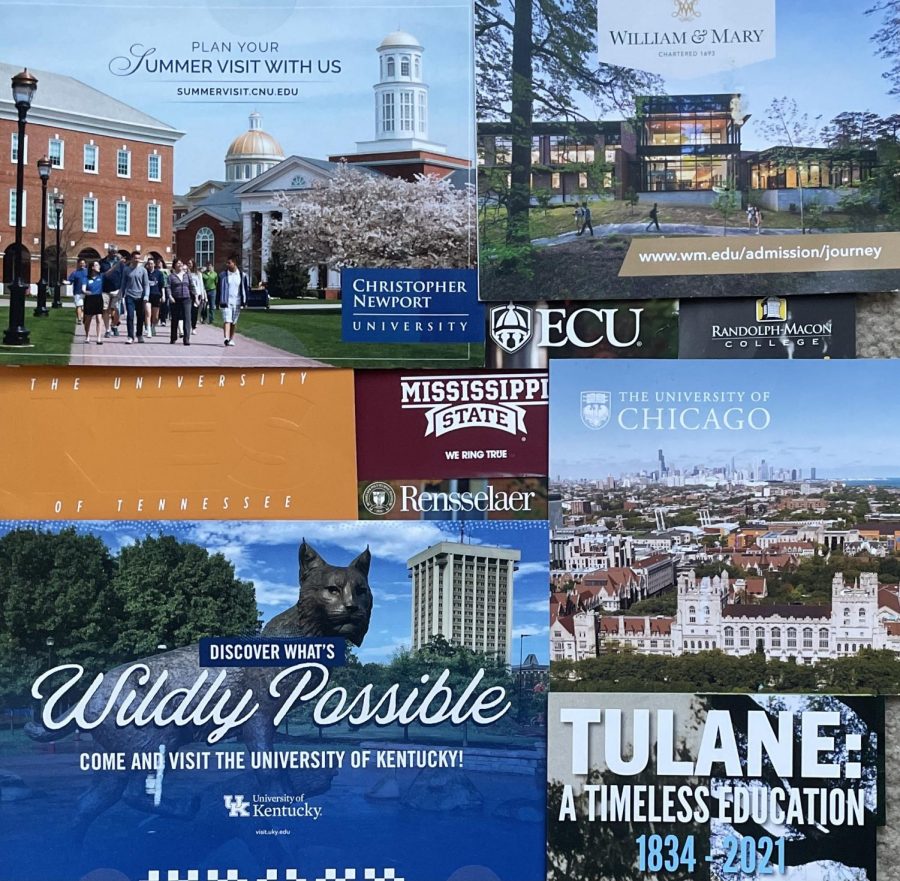College Application Guideline
October 1, 2021
“What are you doing after graduation?” seems to be the most common thing asked once a kid hits high school. For teenagers, this is probably the most dreaded question because, let’s face it, what kid knows exactly where they want to be in the next five years?
While you might not know exactly what you want to do, it’s smart to create a loose plan. So, the question is where do you even start?
First and foremost, ask yourself if you really want to go to college, or more specifically do you want to pursue a higher form of education.
If yes, then it’s time to explore your options. There is four-year university, community college, the work force, military, gap year, apprenticeships, etc. Find out what best fits your personal needs and wants.
It can be extremely easy to allow others to influence, or even make these decisions for you, but that can never really lead to total success.
You’ve reviewed your options, and have decided on pursuing higher education at a college or university. Now it’s just a matter of where you want to go.
The process can be long and stressful, but it is extremely important to look into everything an institution offers, and how it will affect you. Once you’ve got all your ducks in a row try to visit a few of the schools that pique your interest- most offer virtual tours of their campus.
Now that you have researched and done your visits, it is time for the actual applications. This can vary in time depending on the school’s specific requirements.
The Common App is what many applicants opt for because it allows you to apply to up to twenty schools and because of the set up you only have to input basic information once. However, it is important to note that while the Common App is accepted by many schools, some only take applications directly to the school- their websites will tell you what applications they do and don’t accept.
This year the Common App links to Naviance. There you can find things like scholarship opportunities and recommendations.
Most institutions require at least one teacher recommendation and/or a counselor recommendation. This is pretty straightforward- don’t ask a teacher whose class you slacked off in that won’t be a recommendation, it will be a warning. Don’t put off asking for one until the last minute; ask around a month beforehand to ensure time for them to get their thoughts together- remember you are not their only student.
All you have to do for a teacher recommendation is open up Naviance, click on the teacher recommendation button, and select your teacher. They will be notified through the app and that’s it.
Most schools require either the ACT, the SAT, both or neither. Again it is extremely important to look at the school’s specific requirements.Before signing up to test, look at the components of the tests broken down.
You can take the SAT as many times as you want, it’s recommended to take it at least twice. You are testing for three hours, and there is a math, reading, and writing section.
For the ACT you have a limit of twelve attempts and are testing for two hours and fifty-five minutes on reading, english, math, and science.
To sign up you can head over to the College Board website where it will instruct you how to sign up for the SAT, but for the ACT you have to go to the ACT website.
When you actually submit your application it is a lot more important than you may think. There are multiple time frames that equal a different level of commitment to the school you’re applying to.
Early decision commits you to the school. This means if you get accepted then you have to attend the school, so if you choose this time frame then make sure it’s only for your top choice.
Early action means that you can apply at an early date like an early decision, but it isn’t binding.
Regular decision is just as it sounds; it is your typical application submission. For this one you are not committed to the school or anything along those lines, and with this option you are able to defer from the college in favor of another school.



